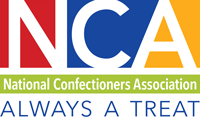The U.S. Food and Drug Administration is responsible for evaluating the safety of food ingredients and additives. Lately, state legislators have overstepped their remit with regards to our food system, opening the door for increased food costs and confusion around food safety.
Read my Chicago Sun-Times letter to the editor, published on March 19, 2024 in response to a recent opinion piece on this topic:
Proposed legislation to ban five food additives in Illinois leads consumers to believe there’s a systematic failure of the U.S. food safety system. That’s not true, the head of the National Confectioners Association writes.
While there has been significant attention given to the proposed food and color additive bans in Illinois and states across the country, the unfortunate reality is that those supporting these proposals are knowingly using inaccuracies and falsehoods to scare consumers and destroy the Food and Drug Administration, including the author of a recent Chicago Sun-Times opinion column. Here are the facts:
First, all color additives must be approved by the FDA without exception. It is currently reviewing red dye 3 and titanium dioxide with results expected in 2024. Earlier this month, the agency added potassium bromate and propylparaben to their science-based review process. In the case of brominated vegetable oil, FDA conducted its own studies and has initiated steps to remove BVO from the U.S. food supply. This is how our food safety system was designed to work, and it’s a real-time example of it working.
Second, no authoritative body in the world has identified any safety concerns with the use of red dye 3 in food, including FDA, the European Food Safety Authority, and JECFA (a United Nations/World Health Organization committee). Although there are broader uses permitted in the U.S., the European Union has determined that red Dye 3 is safe in certain products.
Third, FDA deemed titanium dioxide safe in 2021 and JECFA agreed in October 2023. Highly regarded food agencies from the U.S., UK, Canada, Australia, New Zealand, and Japan have confirmed that titanium dioxide is safe to use in food.
We need to inject some common sense into the discussion. How much would a person have to eat to reach the genotoxicity levels used by EU food safety regulators? If you make estimates based on the assumption that titanium dioxide is used at the maximum level permitted by FDA (1% by weight of food), a person would have to eat: 318 pizza rolls per day, every day, for three years; or 246 mini powdered donuts per day, every day, for three years; or 4,080 pieces (more than 70 bags) of colorful chewy candy per day, every day, for nine years.
Yet the conversation around these additives would lead consumers to believe that they are harmful and there is a systematic failure on behalf of the U.S. food safety system. It’s disappointing that some in Illinois would choose to advance such egregious misinformation.
John Downs, President and CEO, National Confectioners Association




